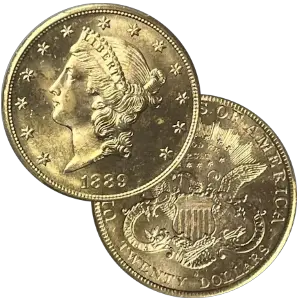The Saddle Ridge Gold Hoard is a collection of gold coins discovered in California's Gold Country in 2013. The discovery generated significant speculation and interest due to the circumstances surrounding it. Here are some key points of speculation and discussion related to the find:
In February 2013, a couple was walking their dog on their property when they stumbled upon several metal cans sticking out of the ground. They dug up the cans and were shocked to find them filled with gold coins. The hoard consisted of 1,427 gold coins, primarily $20 Double Eagle coins and $10 Eagle coins, dating from the mid-1800s to the early 1900s. Some of the coins were in remarkably pristine condition. The estimated value of the coins was initially reported to be around $10 million. However, the true value of the hoard is somewhat subjective and has been the subject of speculation and debate. The coins were minted by the United States government and are a tangible piece of American history. Many of them were produced during the California Gold Rush, which adds to their historical significance. The couple who found the coins decided to remain anonymous to protect their privacy. They worked with Kagin's, a coin dealer, to authenticate and sell the coins. The discovery attracted a great deal of attention from collectors, historians, and the media. The source of the coins and the reason they were buried remain a mystery.
There has been speculation that the coins may have been buried by a 19th-century prospector or that they could be linked to a stagecoach robbery, but no conclusive evidence has been found to support these theories. One of the most significant speculations revolves around the origin of the gold coins. Some theories suggest that the coins may have been part of a stagecoach robbery or heist in the mid-1800s. Others propose that the gold was hidden by a wealthy individual during the Gold Rush era to protect their wealth. The Saddle Ridge Hoard contained nearly 1,400 gold coins, including $20 gold pieces, $10 gold eagles, and $5 half eagles, with a face value of around $27,000. The sheer number of coins led to discussions about how such a large collection could have remained hidden for so long. Many of the coins were found in remarkable condition, which raised questions about how they were preserved over time. The coins were so well-preserved that some experts speculated that they might have been stored in a can or container, protecting them from environmental factors.
The precise location of the discovery was initially kept confidential. Speculation focused on the exact spot where the hoard was unearthed and whether there might be more gold hidden nearby. Questions were raised about the legality and ownership of the coins, given that the land where they were found was private property. The couple who discovered the coins faced potential challenges over their ownership rights, and experts debated the legal implications. Speculation also revolved around the value of the coins. Due to their historical significance and rarity, experts estimated that the collection could be worth millions of dollars. The potential sale of the coins generated discussions about their market value.
The find was seen as a very important discovery, shedding light on the Gold Rush era and the monetary history of the United States. Experts and historians debated the historical importance of the Saddle Ridge Hoard. In the years following the discovery, the coins were eventually sold at auction, and some of the speculation was put to rest. However, the mystery of the exact origin and the circumstances surrounding the hoard remains a subject of interest and debate among historians, collectors, and treasure hunters.


